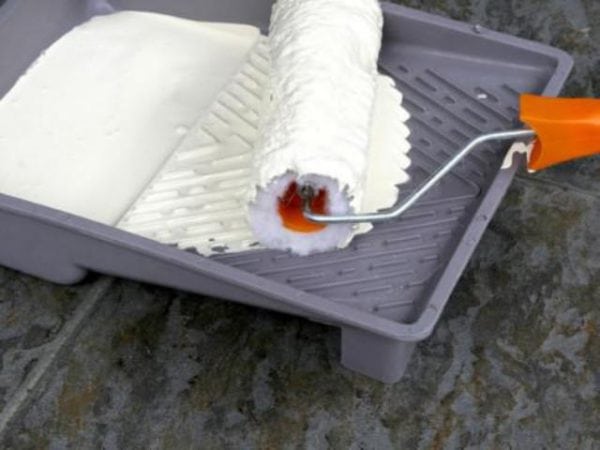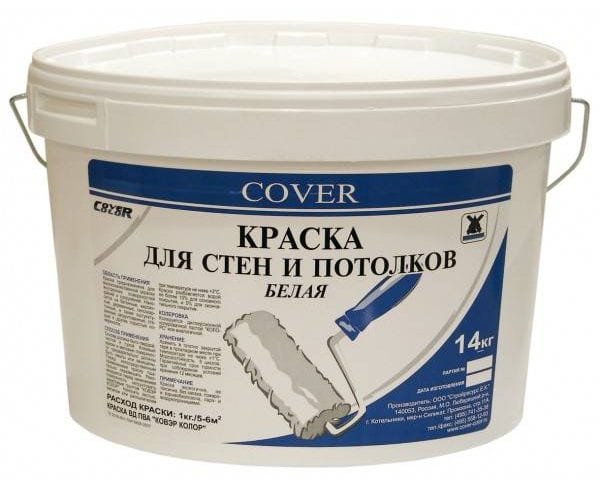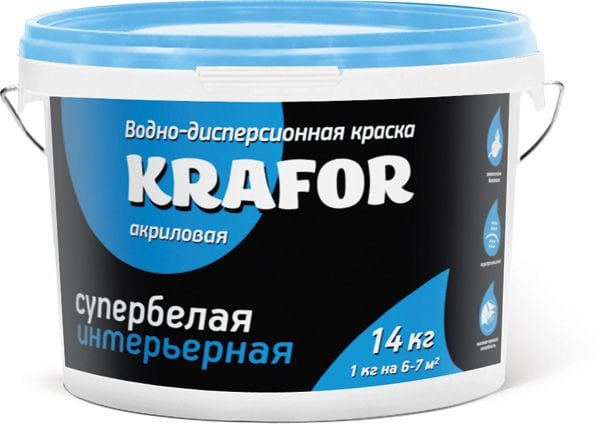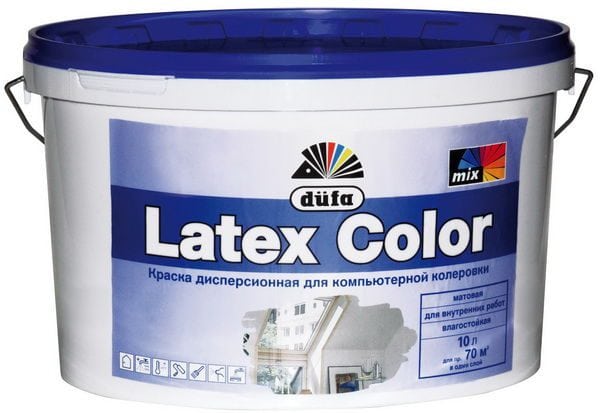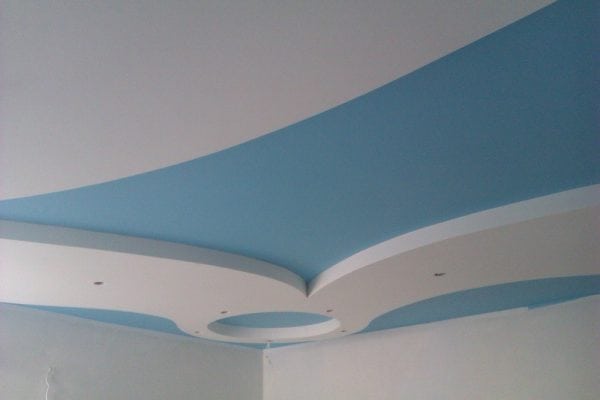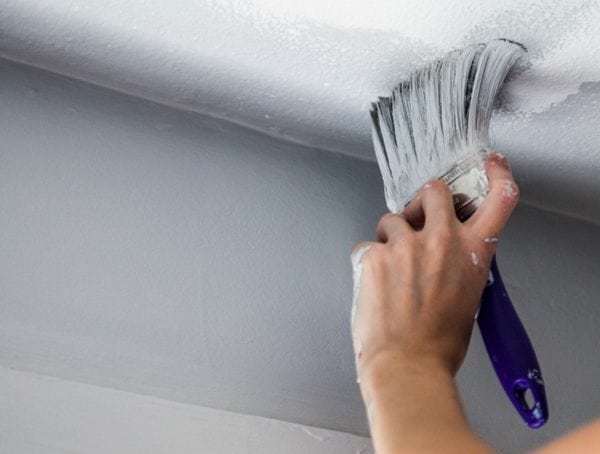Waterborne dispersion paint is a finishing material that is often used to paint facades and indoor surfaces. It is rightfully considered the most reliable and durable material, besides it is environmentally friendly and of high quality. All these properties have contributed to the fact that this material takes pride of place in the list of colors. What is the difference between water and dispersion paints?
- The composition of the funds
- Classification system
- PVA
- Latex
- Acrylic
- Custom properties
- Advantages and disadvantages
- How to paint
- Right choice
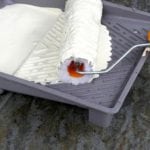
The composition of the funds
Water-dispersion paint - a tool that contains polymers. Most often, their role is played by tar or oil. The solvent for them is water. This feature makes the dye safe in terms of ecology and resistance to high temperatures (fire safety).
According to the name, the substance consists of a large number of solid particles that are in a liquid medium (dispersion). After application to the working surface, this medium (water) evaporates, leaving a durable coating that is resistant to various types of influences.
Almost always, water-dispersion paints are a dense substance that must be diluted with water. They are white or colored. The number of shades is measured in dozens.
What is a part of water dispersion paints:
- Substances due to which a protective film appears on the surface. They are considered the main ingredient. The quality of the paint and the life of the coating depend on them.
- Coloring pigments. Give the material a certain shade.
- Fillers. May be of natural or synthetic origin. These substances are responsible for the properties of the dye. These include talcum powder, marble chips, etc.
- Additives. These components give the material additional properties, for example, increase the drying speed.
Classification system
All funds of this type are divided into three groups. They are distinguished by their main component or binder, as well as their technical characteristics.
PVA
Water-dispersed polyvinyl acetate contain the main substance - polyvinyl acetate. These are the so-called PVA paints. They have a low resistance to moisture, therefore they are not used in rooms with a high level of humidity or for decorating facades. Dyes of this type are used for painting on wallpaper, like paint for radiators, for wood and other surfaces located inside the building. It can be residential buildings or offices.
to contents ↑Latex
Waterborne latex paint is a substance made on the basis of latex. It has a lot of advantages:
- It forms a strong and reliable coating, which is not afraid of moisture and external influences. Latex paint can be used in damp areas, such as in the bathroom or basement.
- The resulting washable surface is resistant to household chemicals and disinfectants.
to contents ↑The only drawback of the coating that latex paint creates is that it fades over time under the influence of sunlight. Therefore, it is advisable to use latex paint for wall treatment indoors.
Acrylic
Another kind of water-dispersion dyes is acrylic paint. This universal finishing material is used for interior work and as a facade paint. The coating over a long period of time does not lose its attractive appearance, is resistant to moisture, gives the surface the ability to breathe, thereby preventing the appearance of mold. The coating does not crack and perfectly tolerates mechanical stress. Paint consumption is significantly less than when using other varieties. This is due to its elasticity and good adhesion to the work surface.
to contents ↑Custom properties
As you know, the quality of any material depends on its characteristics. There are only five of them for the aqueous dispersion solution:
- White. Typically, dispersion facade or interior moisture-resistant paints are white. The shade they get before starting work. The whiter the dye was from the very beginning, the brighter and richer the tint will be after adding the coloring pigment. Titanium dioxide is responsible for whiteness. The better this substance, the whiter the shade of the material.
- Hiding power. This is a parameter on which the paint consumption directly depends. The ideal option is a situation where 1 liter of dye weighs 1.5 kg. If the density is lower, a lot of water was added, and if higher, this indicates an excess of filler. And in that, in another case, the hiding power drops.
- Resistance to moisture. The scope of use of the dye depends on this characteristic. It shows whether it is possible to use the material only for interior work, for example, as paint for the ceiling, or is it suitable for facades. Among all types of paints, polyvinyl acetate compositions are considered the least moisture resistant. The rest will easily tolerate washing even with detergents.
- Resistance to light and direct sunlight. How long can the coating maintain its original appearance if it is in the sun? It depends on which substance is the basis. If it is polyvinyl acetate, the coating will hardly burn out. Latex-based solutions are best used in darker rooms, for example, in the hallway.
- From stability before mechanical stress depends on how long the coating can last.
For each type of finish, you should choose the appropriate variety. For example, for a corridor or basement, a latex-based dye is suitable. It burns out under the influence of the sun, but creates a durable coating. Waterborne acrylic paint for indoor use can be used even in wet or damp areas. It is suitable for working outside the building.
to contents ↑Advantages and disadvantages
Water-dispersive paint for walls and ceilings, for wood and radiators, for interior and exterior use has many advantages. Here is some of them:
- Absolute safety and environmental friendliness. This is achieved due to the fact that ordinary water is used as a solvent.
- No unpleasant odors.
- Easy to use. It is not necessary to have any special skills in order to paint the surface. For application, you can use a brush or roller.
- Such paints are not flammable. This explains their fire safety.
- Mold and fungus do not appear on the surface.This is evidence that the coating is “breathing”.
- The service life of the coating is approximately 15 years. However, it will not peel off, crack or swell.
- It takes only a couple of hours for one coat of paint to dry completely.
- The coating is resistant to mechanical damage.
- Affordable price.
- Excellent moisture resistance. It is especially good for a wooden surface. The film created by paint will be a reliable protection.
- Has a certificate of compliance with all necessary requirements.
Despite all the advantages, such dyes have several disadvantages:
- The quality of the coating depends on the weather. It is not recommended to perform work during precipitation or in cold weather. If it rains, the solvent (water) simply will not evaporate. In the heat, you also do not need to work. The surface will dry too quickly, degrading the quality of the coating.
- The working surface must be prepared. It is important that it is perfectly even. A thin layer of dye will not be able to hide flaws.
- The price may be higher than those of paints that use other solvents.
How to paint
How to use water dispersion dyes? For example, you can take the process of painting walls in a room:
- To start, the paint must be thoroughly mixed.
- If the surface is painted for the first time, a primer is previously applied to it.
- If necessary, paint can be given the desired shade. To do this, you need to mix it with a special pigment.
- Work must begin from the window. The first layer should lie parallel to it.
- You can apply paint with a brush or roller. Layers can be from 1 to 3. Their number depends on the state in which the surface was originally. Each layer takes about 4 hours to dry.
For painting 1 m2 of the surface, approximately 140-180 g of paint is spent. Consumption is the same when using both a roller and a brush.
Experts advise applying the first layer with a brush, and the second with a roller. In this case, the coating is smooth and uniform.
to contents ↑
Right choice
How to choose a good water-dispersion paint? It is necessary to pay attention to several factors:
- country of origin;
- trademark;
- scope of use;
- type of work (internal or external);
- certificate of conformity and quality;
- shelf life;
- storage rules.
It is important that the seller can present a certificate of conformity and quality. This is the only way to make sure that the paint meets all the requirements for it.
Waterborne dyes are an excellent solution for interior and exterior decorating. Created using a roller or brush, the coating will protect the surface from moisture, mold and mechanical stress.

